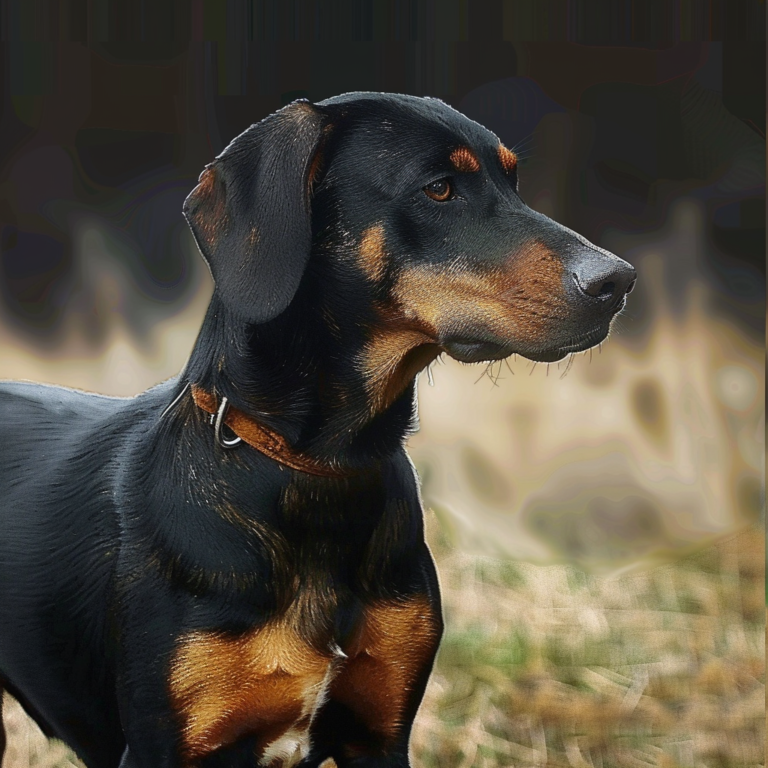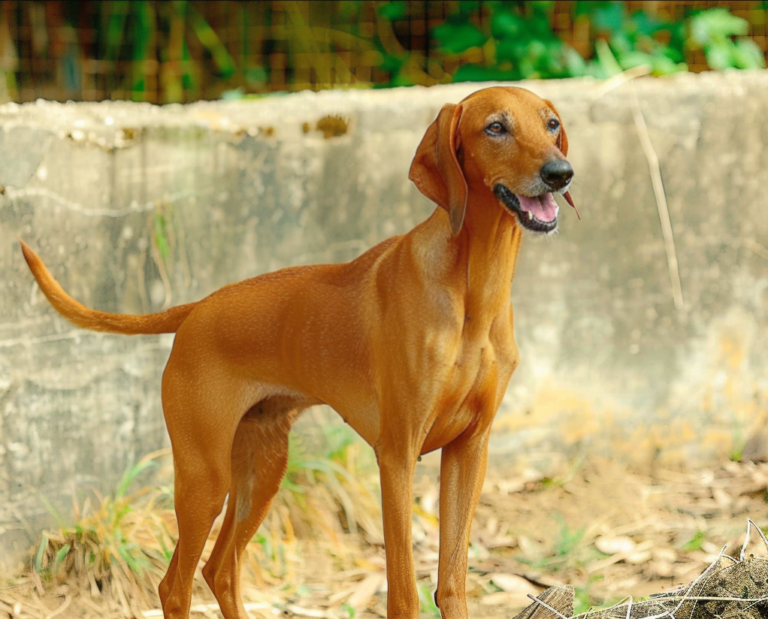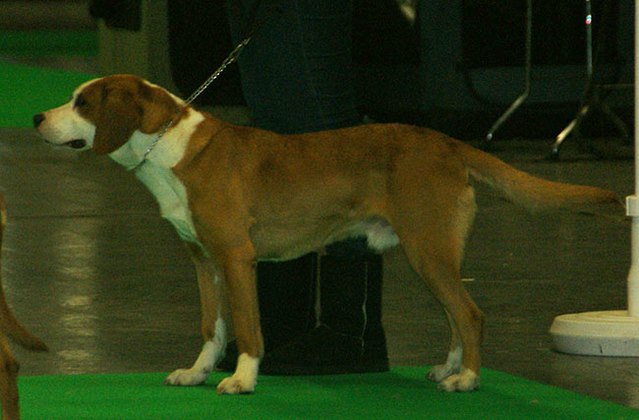The Beagle Harrier was developed in 19th century France. It is speculated (although not fully known) that this breed came about by a mixture of both the Beagle and the Harrier – but make no mistake, this is a breed unto its own and is not a mixed breed as some “armchair quarterback” dog websites proclaim. They are quite rare and in the United States are only recognized by the UKC – even then, they are rarely seen in this country. This pack-hunting scenthound was originally bred to hunt hare, deer and fox and can still do these jobs today.
Beagle Harriers are loyal companions and are good both with other pets as well as children. Like other pack-hunters, they do best with another dog in the family. Cats might be accepted as family or they might be chased – for best results raise the puppy with cats to mitigate future problems. With people the breed is affectionate and playful. Like most hunting scenthounds, however, they need lots of exercise and work best in properties that have plenty of space. Exercise should be daily as well as fairly vigorous in order to wear them out – and keep in mind that they will need to be kept on lead when in public areas. Prospective owners should realize the breed is determined and gamey so while they can make great companions they will exhibit sniffing, chasing and hunting behaviors.
The Beagle Harrier can make an adequate watchdog as he does tend to vocalize when people arrive on the property. He’s less of a barker and more of a howler, and his loud bay can carry far and wide! This does not mean that he is likely to defend the house if someone makes their way inside as he’s not really a guard dog, nor an aggressive breed. But his loud bays will deter many would-be intruders in the same way that car alarms send criminals scurrying off to a quieter target…. When not keeping an eye out the window (watching for new friends or woodland creatures alike), he is usually fairly calm in the home assuming his exercise needs are always met. 
Beagle Harriers are fairly well-mannered in the home and aren’t normally prone to excessive dominance struggles. They simply enjoy spending time with their families inside or out. When outside, however, take note that they may turn into escape artists if tempted by an enticing smell. They can turn very quickly from a calm, almost lazy hound to a spirited and determined animal intent on the hunt! Tall, secure fences are a must! Because of their love of hunting they do best when given structured games involving scent, and especially thrive when taken on actual hunting expeditions. The Beagle Harrier is intelligent although independent and prone to being distracted easily. Obedience training may be more difficult than with other breeds of dog. Even so, teaching a reliable recall is essential for this high prey-driven hound as it may come in handy one day!
Beagle Harriers are medium sized dogs that live about 12-13 years. They have hanging ears set at eye level and which are slightly longer than that of the Harrier. The tail is long and carried in a sabre fashion above the topline. The coat is short, thick and flat; and is always tricolor of one variation or another which may include grey tricolor or white grey tricolor. The skull is rather broad, with a muzzle that slowly tapers toward the end without being pointed. The general appearance is one of classical elegance, with a muscular build – size and appearance halfway between…. obviously the Beagle and the Harrier.
The Beagle Harrier has a short coat that is easy to groom, sheds only moderately and requires baths on an infrequent basis. A weekly brushing, nail trim and ear cleaning should take practically no time at all. Breeds with hanging ears need a little more examination and cleaning than other types of dogs, but doing this exam on a weekly schedule is easy for the vast majority of owners to do. This is one reason why they can be a good choice for a novice dog owner looking for an active breed.



